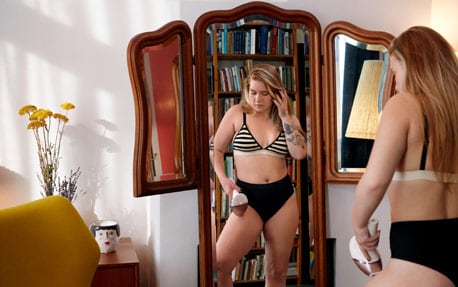
How to use IPL for pubic hair removal

If you have marks on your skin, it’s natural to have questions about using IPL. Scars, moles, birthmarks and freckles all seem like they could be potential IPL side effects. If you’re wondering ‘how does IPL hair removal work for dark spots’, you’re in the right place, as we answer common questions like ‘can you use IPL on moles?’ and ‘how long does IPL take to work?’
Here are some of your most important questions about IPL and potential risks and IPL hair removal side effects answered:
Before we get onto questions about using IPL on dark spots like moles, birthmarks and freckles, we first need to discuss IPL for dark skin in general, and how IPL works across different tones. IPL-based treatments are generally most effective on very light to dark brown skin tones, but aren’t suitable for very dark skin. That’s because the light pulses that reduce the regrowth of hair are absorbed by the hair's melanin (colour pigment) beneath the skin. If there is a high level of melanin in the skin, then it attracts the light. Dark and very dark skin tones are more prone to absorb the light, and this can cause skin damage like burns, discolouring or blisters. These are examples of possible IPL side effects if the device isn’t used correctly.
Like hair, moles get their colour from the pigment melanin, and there is an accumulation of melanin in birthmarks. From what we already know about how IPL hair removal works, the energy of the light in IPL is absorbed by melanin, so IPL would also heat the mole or birthmark itself. It could cause discomfort, burns or long-term changes, which are considered IPL hair removal side effects. So, before you undertake any IPL hair removal treatment, moles and birthmarks need to be identified so you can avoid them. You shouldn’t use IPL directly on or close to birthmarks or moles. However, if there’s one in the general area, you might be able to cover the mole or birthmark and flash around it. In any case, it is advisable to consult a dermatologist beforehand if you have birthmarks or moles. When it comes to IPL hair removal, moles, birthmarks, and freckles can be considered in a similar way. Although there isn’t as big an accumulation of melanin in freckles as in moles and birthmarks, you should still avoid treating a freckle directly to prevent potential IPL side effects.
In principle, the use of IPL around and on scars is not a problem. In fact, dermatologists even use IPL for acne scars and to treat acne. The light impulses intentionally damage the sebaceous glands. Excessive sebum production is reduced, so that inflammation decreases. Acne scars are lightened by IPL and are therefore less noticeable on light skin. This means that IPL can only be used on scars for hair removal if the scarred skin is light. In addition, you shouldn’t treat fresh scars. The skin is more sensitive in this area, which is more likely to cause pain and irritation. In summary, when using IPL, scars need to be old and skin light for effective and safe hair removal. That being said, although IPL is generally harmless for scars, if you have any scars, you should consult a dermatologist before using an IPL device at home. Understanding fully how IPL works and being aware of potential IPL hair removal side effects helps ensure safe results.
After an IPL application, it initially appears as if nothing is happening, as no hairs fall out immediately. However, there’s no need to worry. With IPL, only the hair root is heated to inhibit further growth. The hair itself remains in the skin. Due to the normal growth of the skin, the hair is slowly transported up and out. So, exactly how long does IPL take to work? It can take up to 3 weeks for the treated hair to actually fall out. If you’d like to learn more, you can read expert information about how IPL works.
The risk of burns from IPL treatment is very low if the IPL device is operated correctly. We’ve already mentioned the chance of burns if IPL is used on areas that are very dark that shouldn’t be treated in the first place. IPL issues like burns also typically occur because of incorrect settings. This means that the IPL device is probably set too high, causing too much heat in the hair root, one of the more common IPL side effects. The Philips Lumea IPL 9000 Series is equipped with SenseIQ technology that is designed to prevent this from happening. Before the treatment, you use the SmartSkin sensor to determine your skin tone, from light to dark. After the measurement, the IPL device sets the appropriate settings. However, you have the option to manually reduce or increase the intensity of the light pulses. The best way to find out how IPL hair removal works safely is to read the operating instructions. If you’re new to IPL, you can try it out with the Philips Lumea Try & Buy programme.